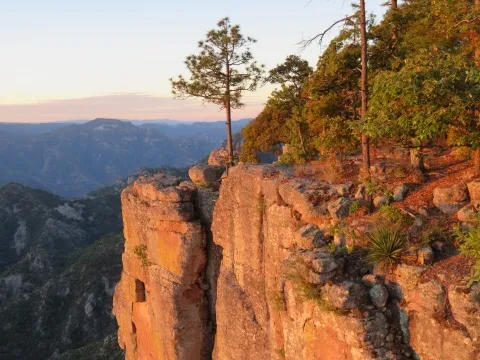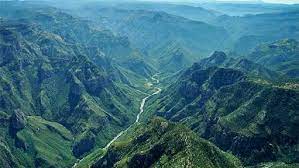The environmental importance of the Sierra Tarahumara
The Sierra Tarahumara is an impressive place in Mexico, with unique biodiversity and rich cultural diversity. With more than 5,400 communities in 12 municipalities and a territory of almost 42,000 square kilometers (almost the size of Switzerland), the Sierra Tarahumara is a center of global biodiversity. Having more than 4,000 species of plants, 150 species of mammals, 300 species of birds and 25 species of amphibians recorded in this region. In addition, the Sierra Tarahumara has a cultural diversity divided into four towns: the Obb town, the Guarijó, the Ódame and the Rarámuri.
In addition to the impressive biodiversity and cultural diversity, the Sierra Tarahumara is also known for its importance when it comes to "bioculturality." Bioculturality refers to the interconnection between biodiversity and cultural diversity, and how these two dimensions are closely related to each other. In the Sierra Tarahumara, the culture and worldview of the indigenous peoples has developed the way in which biodiversity exists and biodiversity developed the culture and worldview of these indigenous peoples, it is a relationship that feeds on itself.
The Sierra Tarahumara is not only known for its impressive biodiversity and cultural diversity, but also for the environmental services it provides. Environmental services are the benefits that ecosystems provide to the people, towns, communities and cities of the region, and in the Sierra Tarahumara, these services are very valuable. One of the most important environmental services provided by the Sierra Tarahumara is climate regulation. The region's forests and vegetation help regulate the climate by absorbing carbon dioxide and releasing oxygen, helping to mitigate climate change. In addition, the Sierra Tarahumara is an important carbon sink, since it has a large amount of forests and vegetation, which store large amounts of carbon. Another important environmental service is what its hydrographic basins generate. The Sierra Tarahumara is the area with the highest rainfall in the region, generating several important rivers, and the vegetation and soils of the region help to filter water and maintain the quality of the water in these rivers. This is especially important for communities, cities, and irrigation districts that rely on spring recharge and runoff from streams and rivers for use in drinking water, agriculture, livestock, and electric power generation.
For all of the above, it is important to value and protect the Sierra Tarahumara since it is a place where They develop unique cultures with different worldviews that complement other knowledge, we can also find unique biodiversity in the world and generate environmental services, which are fundamental for the sustainability and well-being of local communities, towns and cities in Mexico and the world.
So now you know, on your next visit to Creel and the Sierra Tarahumara, look to protect the environment and support projects and businesses that promote respect for the culture and territory of the people who live there.
Don't forget to follow us on all our social networks!
We leave you sources for your further information.
Roberts, Elizabeth F. S. "The Rarámuri of Mexico: an ethnography of survival." Publisher: University of Utah Press. Year of publication: 2002
Boege, Eckart. The biocultural heritage of the indigenous peoples of Mexico: towards the in situ conservation of biodiversity and agrodiversity in indigenous territories. No. Sirsi) i97896803854. 2008.
Howarth, William D. "Sierra Tarahumara: an ethnographic and historical study." Publisher: University of Utah Press. Year of publication: 1983
Harmon, David. "Biodiversity and traditional knowledge: equitable partnerships in practice." Publisher: Island Press. Year of publication: 2002



















Comentários